Here are some of the other ways that a brand can be used to improve your business in a range of ways.
By SAVANT MAGAZINE
Read MoreHere are some of the other ways that a brand can be used to improve your business in a range of ways.
By SAVANT MAGAZINE
Read MoreThe design of a work space has the power to immensely improve the productivity of those working in it.
By TEAM SAVANT
Read MoreThis young Latvian jewellery designer welds together an eco-conscious approach and light, effortless design, creating pieces so full of character they will spice up any wardrobe.
By Johanna Raudsepp
Read MoreWe explore the characteristics of the Scandi-craze in the field of interior design with the expertise of Christina Forsberg, London-based Norwegian architect and consultant. On her elegant blog Scandinavialist, she exposes all the 'must-knows' and 'oh-wows' of Scandinavian design.
By Meri Frig
Read MoreEven if you've already settled in a huge, gigantic metropolis, only dreaming of faraway greeneries in favour of big city excitement, how to still make yourself feel comfortable in a suitable living space and build a perfect environment for calm and harmony at home? Read our tips!
Read More
OOD handbags lookbook, SS17.
Words: Johanna Raudsepp
Established back in 2012, Italian fashion-forward accessories brand OOD proves that 'slow' in fashion is not all about dedication to radical ethical principles and conscious consumption, but also about innovation and thinking outside of the box.
Father-daughter-duo, Marcello and Marta Antonelli, were looking for an alternative, yet trendy solution to replace leather in accessories design. Drawing their inspiration from python skin, they found that wood was the way of future in crafting memorable pompous luxury items important in every woman's wardrobe. Thus, Ligneah was created — a versatile hand-made soft wood material used to make innovative textiles.

OOD handbags lookbook, SS17.
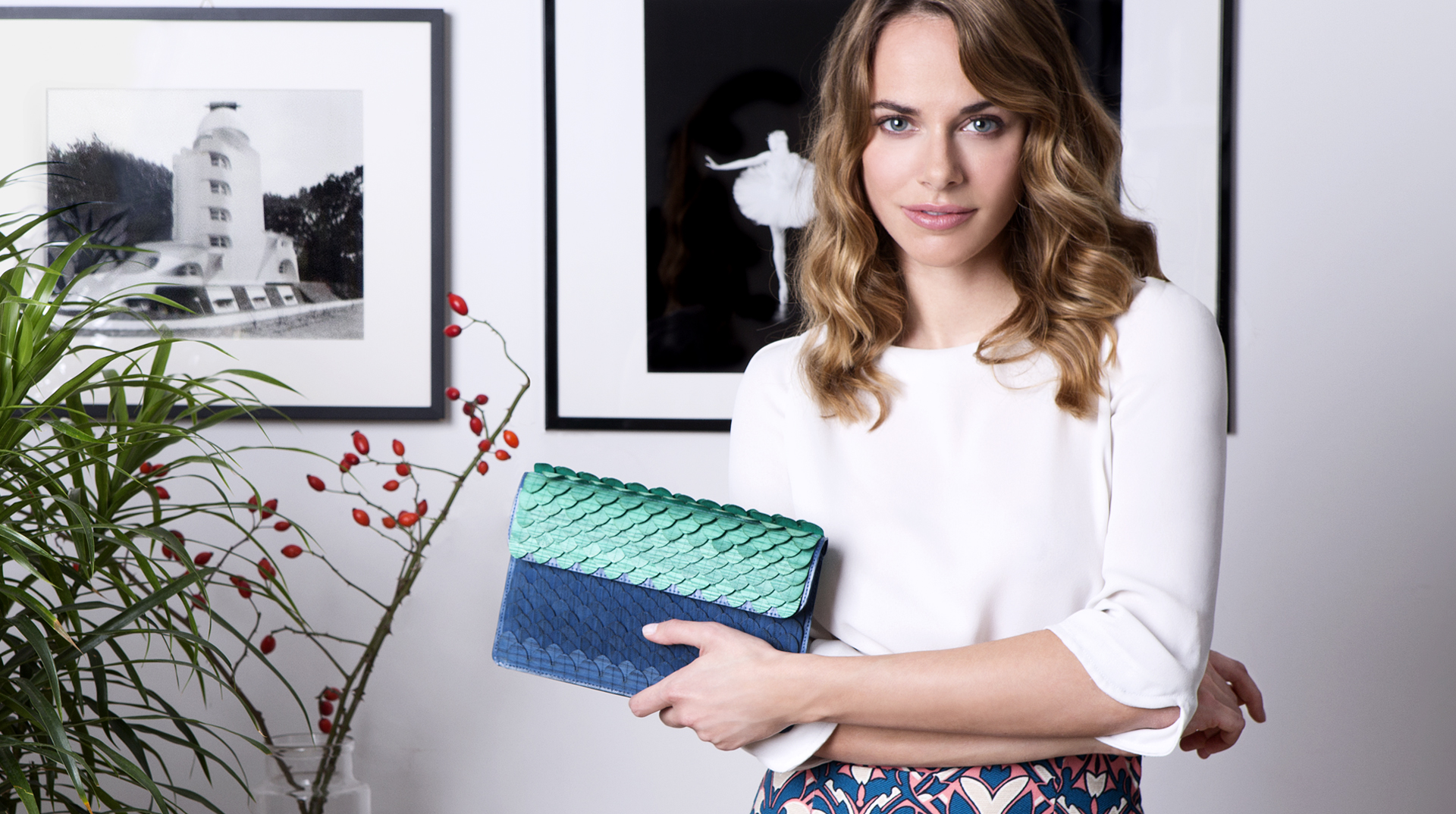
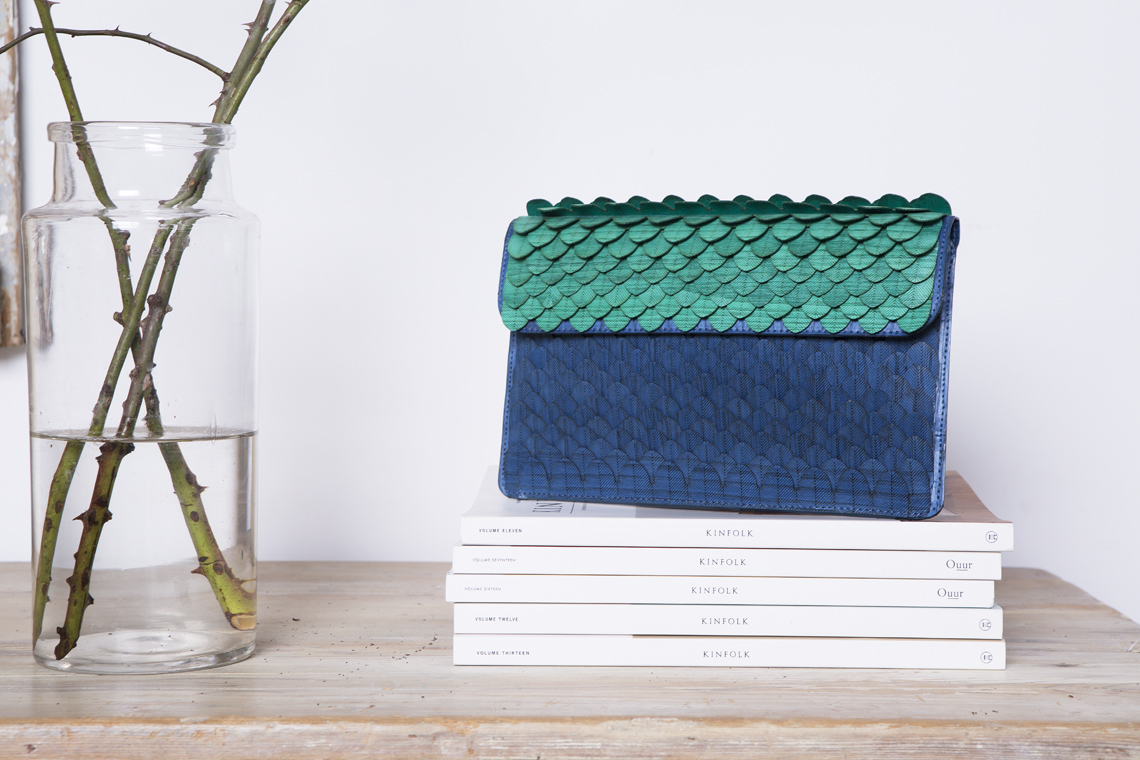
OOD specialises in using their own natural tissue, Ligneah, to create stunning bags and colourful accessories. Their latest collection is inspired by Greek mythology — a beautiful way to honour the material that has been a source of livelihood for mankind throughout the ages. Why wood, you ask? It is a resource that combines all elements a sustainable designer desires. Wood is eco-friendly, natural, biodegradable, cruelty free, and has a high-end look. It doesn’t matter which type of tree you use (selected by Greenpeace standards, naturally), the results are always living up to the moment.

OOD handbags lookbook, SS17.

OOD handbags lookbook, SS17.
Marcello and Marta follow every possible ethical principle du jour, when creating and designing for OOD, and paving way to the future of exciting, innovative materials. With a traceable and sustainable production process, they make sure every item is made with love and care. Although they can create 200 bags and 150 shoes from a single tree, the brand is dedicated to proving that ‘sustainability is not just a fashion word’. OOD is partnered with Tree-Nation and supports its reforestation projects by planting a tree for every item purchased. So you do not only make a unique, stylish choice when wearing OOD, but you naturally help to make a good deed, too.
Shop here:
Finnish NO/AN by Anna Lehmusniemi is an artisanal handbag brand boasting a purposeful, well-executed approach, whereas each bag is crafted by one single artisan throughout the process. Created as a reaction to the reckless speed of fashion industry, Nordic NO/AN believes in honest, detailed design approach and thorough, transparent craftsmanship of patiently dreamed up bags from start to the finish. The collection’s trademark matte, muted colour palette, as well as sharp graphic and geometrical lines, recalling Nordic landscape and architecture, allured us immediately. One true meticulous, quality fashion staple worth having this soon approaching spring season, that's a NO/AN bag.

NO/AN SS17.
What were the key concerns regarding the fast fashion industry that turned into values you embrace with NO/AN?
The key concern is the overconsumption of things that do not last and are not needed. If a T-shirt costs £4,99 and a pair of jeans £12,99, there is clearly something wrong. It indicates the quality is not good and the artisans haven't been decently paid for their work. Fashion productions are also often far bigger than the demand, and so much goes to waste, or is finally sold at a very low price. As a designer, I also feel that it is important to give the design process the time it needs to create a product that is resilient. When it comes to fast fashion, this route is not the objective.
NO/AN’s values are built on honesty and sustainability. I want to create bags that can last for a long time, both quality and design wise. For me it is also very important to work with ateliers and suppliers that care about their employees, who are paid fairly.
What's the most unique thing about NO/AN we need to know now?
The most unique thing is that every bag is made by one artisan from the beginning to the end. The bags are also signed by the artisans who made them. For me this is luxury.

NO/AN SS17.
Is the leather and other materials you use ethically sourced? Where do they come from?
I use natural grain leather and nickel-free metal zippers in my bags. The leather is a bi-product of the meat industry, and it comes from a Portuguese tannery that prioritises environmental preservation. The zippers are made by the Swiss brand RIRI, which are partly made in Switzerland and partly in Italy. I know both suppliers well.

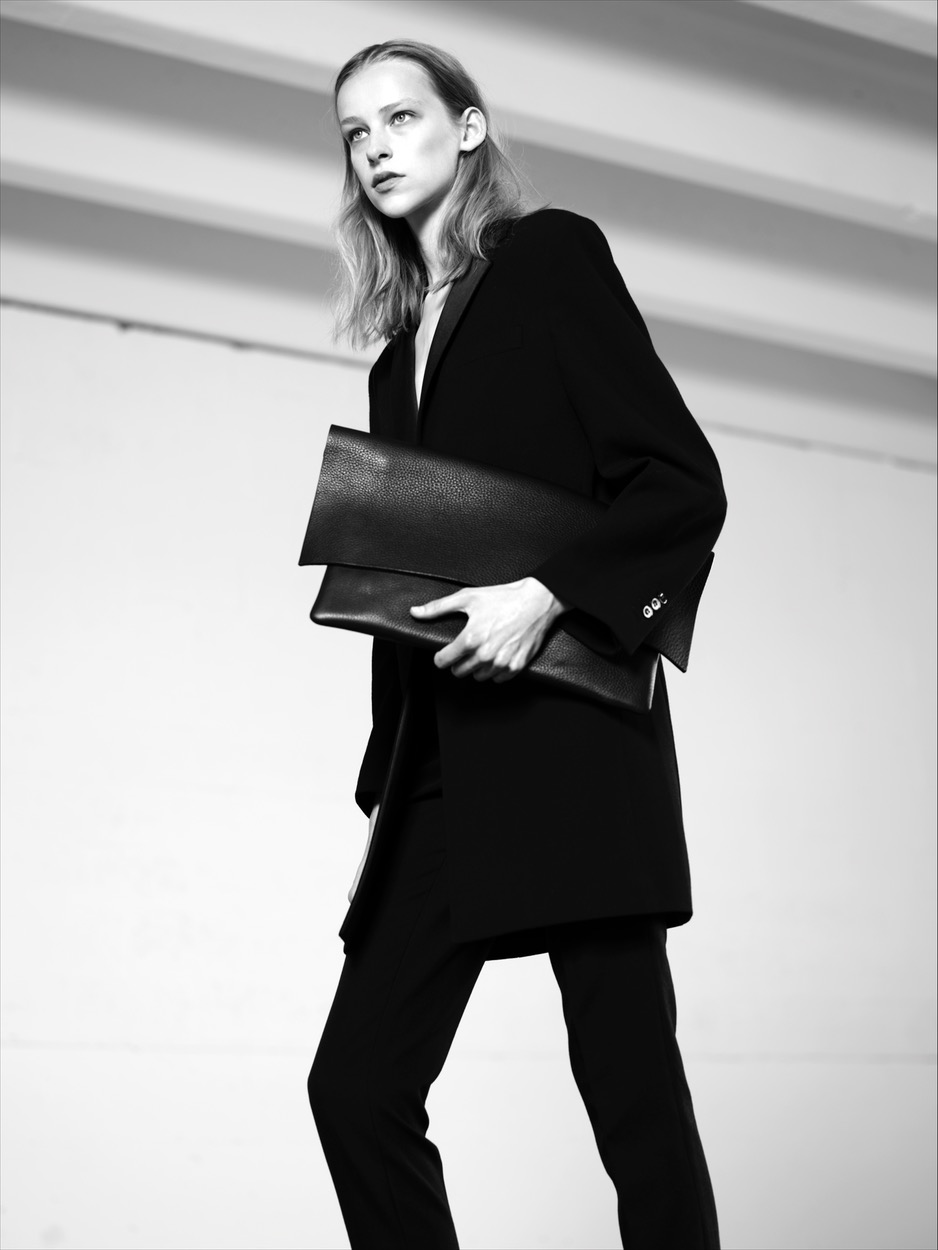
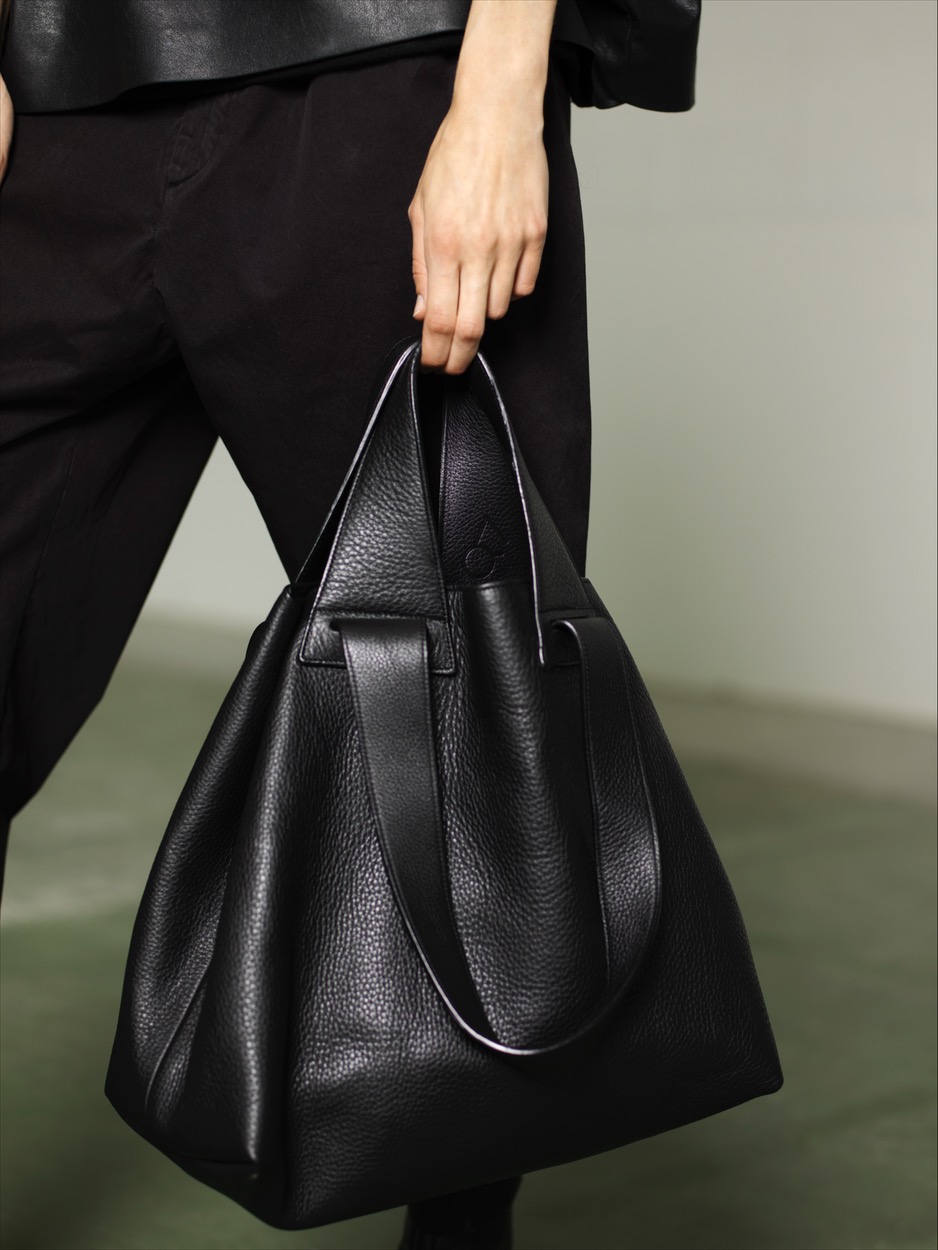
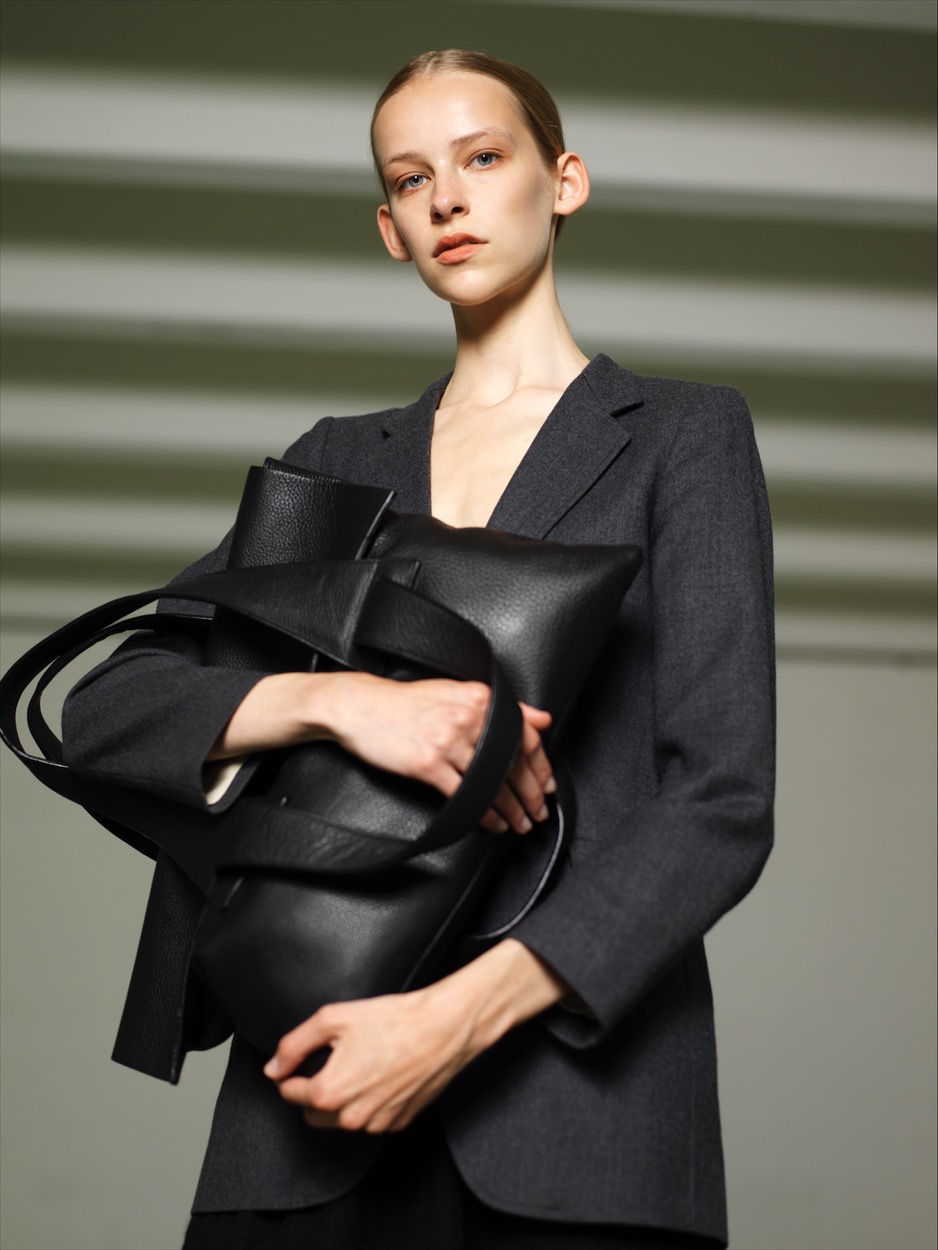
What's your opinion about the fashion industry turning a degree closer to transparency and honesty? What could still be done differently?
It is clearly a growing trend and I think it is great. If the brands have nothing to hide, it should not be an issue to be open about where they produce and source the materials.
Sustainability and transparency can easily sound like something boring. I think some transparent brands could focus more on the image and to create an interesting, story-telling world around their products. For example, Everlane has executed it very well.
How do your Finnish roots pair with the aesthetics of the brand? Do you feel geography has influenced your art direction in any meaningful way?
Even though I have been living abroad several years, my design style and personal taste is still very much inspired by my Finnish roots. Actually, I think that the more I stay away from Finland, the more I take inspiration from Finland and appreciate Finnish design. Finnish design is often very minimal, but still not entirely boring. These are the same characteristics I want to communicate with my bags and NO/AN's art direction.

NO/AN SS17.
The branding of fashion will possibly always be more fast paced — we need new images for products every season, if not more frequently. It's all production, all waste. How could this advertising process be perhaps slowed down — I would bring forward more seasonless campaign images, etc? What's your take on that?
Since I do not work with fashion seasons, I also aim to have seasonless campaigns. From NO/AN’s first shooting you cannot say directly, if it is a summer or a winter collection, because it works for both. For me brands coming up with campaigns frequently is a positive thing. It creates work for photographers, stylists, make-up artist and models. If you create digital marketing content, you do not waste materials. But if you print, it is important not to print more than needed.
I think it is important to refresh the image of a brand and collection every once in a while, even though it is a slow fashion brand. A sustainable brand does not have to be boring.
Shop here:
The scarcity of garments of Far East origin available in the UK inspired Tom, founder of Alpha Shadows, to start catering a cornucopia of contemporary Japanese design for fellow seekers of Far Eastern impeccable excellence. In his concept store in Peckham, London, built according to his own vision, a slow-paced shopping experience awaits admirers of the finest Japanese porcelains and jeans, whereas even the odd lost wanderer is guaranteed to leave with a few new Far Eastern founds in hand…

Photo: Alex Reyto.
Tell us more about your background.
Before the shop, I was camera crew in the film industry. I specialised in Stop Motion Animation, which involves a lot of waiting around, so between shots I started looking at ever-obscure clothing brands on indecipherable websites.
There came a point when I just had to go to Japan — a country I'd long wanted to visit — to see these clothes in person, but also experience the culture, the food and the country. On my first trip there, I wasn't especially thinking about starting a shop, more about filling my belly, my mind and my suitcase...
What led you to starting Alpha Shadows?
Once there, the penny started to drop. There were some great brands I was a fan of that were simply impossible to find anywhere outside of the Far East, and I couldn't understand why they weren't. I decided I didn't want to be sitting here in 2 or 3 year’s time, when such and such a brand was picked up by a UK, European or even U.S. shop and thinking, 'I should've done that!'. I was equally inspired by incredible retail environment over there; the whole experience is so well considered and executed. I came home with my mind made up about what I should be doing with my life!
Three of my big passions in life are film, clothing and cricket, and I never had the talent to be a cricketer. A big part of me misses working in stop motion and there's every chance, if I'd never made the journey to Japan I still would be, but after that first visit I knew what I really wanted to do.
How did you grow interest in Japanese fashion to begin with?
In my early teens I was really into skate brands and whilst my local town had a pretty decent skate shop, I always wanted some shoes or hoody that I knew I wouldn't see someone else wearing. This was in the late nineties/early noughties when the Internet was still in its infancy. I'd find myself on a website for a shop in the U.S. that had the thing I'd never seen anywhere else. As my sartorial 'persuasions' changed and developed, the habit of always looking further afield continued.
At some point I got my first pair of ‘Made in Japan’ selvedge denim jeans (I'd hazard a guess that for many people, like myself, it all started with a pair of Japanese denim). There was something about the quality and attention to detail, even on something so simple in many ways, as a pair of jeans, that was just better in every way to any I'd owned before. This realisation that maybe they do everything a bit better quickly expanded beyond that pair of jeans. Obviously there is incredible clothing made all over the world, but what I found over there, as well as its scarcity, really appealed to me.

Photo: Alex Reyto.
What was the one most important thing you kept in mind when starting Alpha Shadows?
The most important thing at the beginning and always will be is to be different. I'm happy to admit that there's a handful of brands we stock that have a few other stockists outside of the Far East. In the grand scheme of things they're still pretty niche, but not that hard to find with a quick google search, but nonetheless, brands I'm a big fan of and wanted to have in the shop since day one. People might query how this makes us different and what I hope people see is that the majority of brands we stock are very, very tricky to find outside of their home country. When customers see the brand mix, I hope they appreciate the difference we attempt to offer vs. other retailers. The most important thing is visitors love the clothes or footwear or ceramics, but alongside that also feel like they've discovered something new and different. This is as important to me now, as it was at the start and will continue to be.

Photo: Alex Reyto.

Photo: Alex Reyto.
Why is Japanese fashion so hard to get hold of in the UK?
You may be able to find a coat by a certain Japanese brand on a website in Japan, but the site is in Japanese and even if and when auto-translate works, it is unlikely the brand will ship abroad. While there are a very small number of sites that do offer some international shipping, it has only begun to happen fairly recently.
How important is sustainability for the designers you represent?
In terms of sustainability, I can't speak for each brand directly, but what I can say is the materials used are the very core of the brands' philosophies. It's what defines their clothing and, as a by-product of this ethos, they source the best fabrics and dyes rather than the cheapest, which in turn usually carries little regard for the environment and the people that make them.
Your branding is eye-catching and unique. What influences did you consider when creating the visual identity for the web shop?
I was pretty clear about what I didn't want rather than what I did, so much of the influence came from what I thought was wrong, rather than what I thought was right. I sketched out a few ideas for the logo and left this is in the far more capable hands of a designer, who turned it into something that I liked the minute I saw it. It had to be clean and simple, but also unique and recognisable. This 'design philosophy' and this ethos I hope remains consistent with both the website and physical store. I didn't want to be too clever — the focus is to have a site that is usable with a well-presented collection, as well as clear, simple and honest product information.
Considering the designers and brands you represent in your store, what perhaps unites them?
What unites the brands we work with is a desire to make the best product they possibly can. From the fabric to the stitching to the buttons and the zips, it's about either sourcing or developing what they feel is the ideal component for that item, rather than the cheapest and quickest to produce. Some of the products I sell couldn't be more varied; there is denim created on antique looms and hand-woven sweaters, but also jackets with heat bonded seams, made from some of the most technically advanced fabrics on the planet.

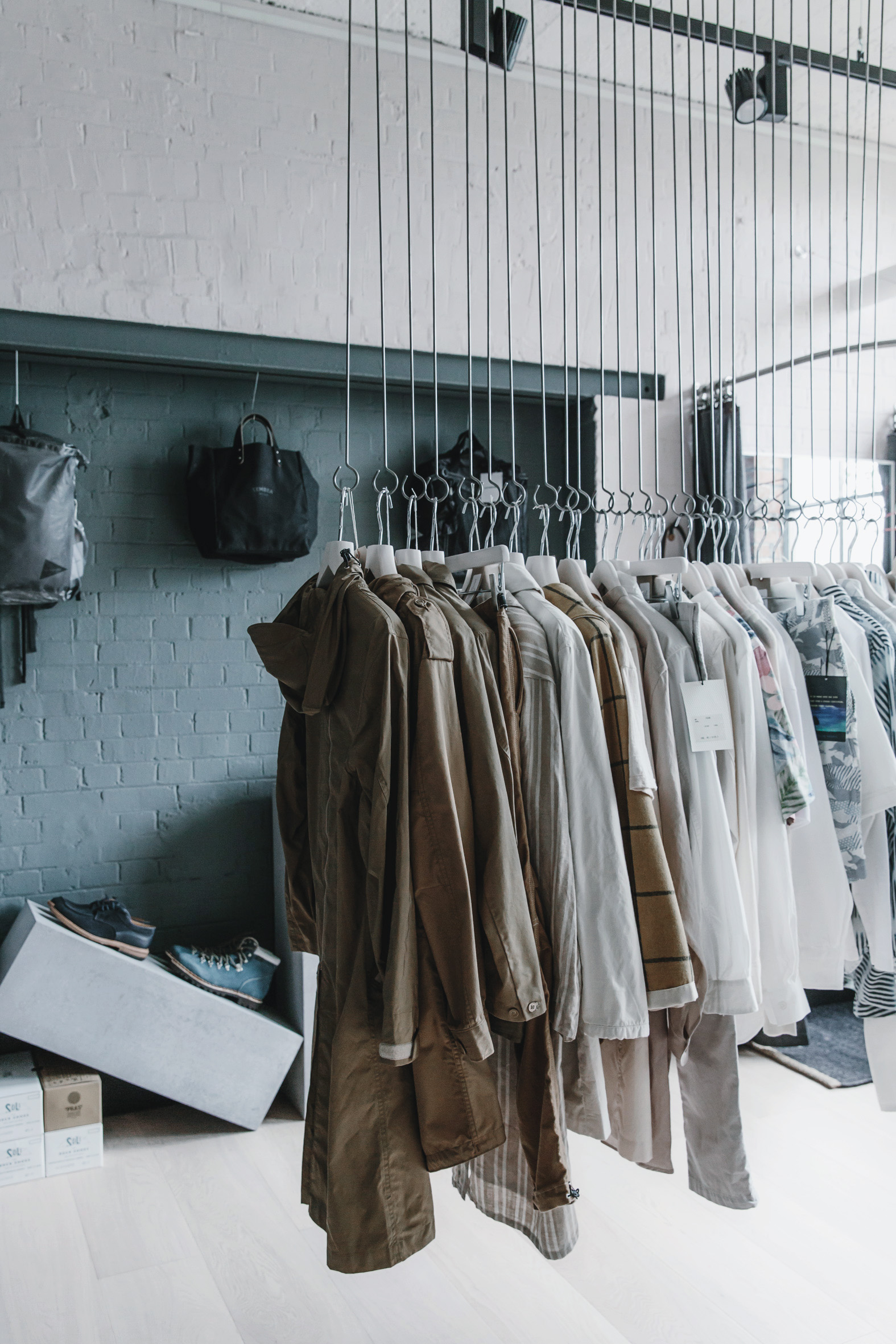
Where do you source the brands?
It's down to a lot of research and a lot of tough decisions! I'm always finding new designers and brands that I appreciate, but I always try to consider how they will fit in alongside the other brands we stock. I want every brand to stand out in their own way, but I don't want them to seem at odds with one another. Just because I love a particular brand, doesn't mean it's right for the shop.
Name a couple of your recent favourites.
They're all my favourites, because each in their own way are doing some brilliant things. What is of importance, though, is the fact that we support and stock some really special young designers and brands that are in my mind criminally underrepresented. So to give them a platform is something I'm particularly proud of. andWander, Meanswhile, Niuhans, and Salvy have all been around a few years and these are some of the brands I have a certain fondness for.
How have customers reacted to the physical shop vs web store?
The reaction to the physical shop has been overwhelmingly positive. I suppose because the building we are in is a little rough around the edges (it's well over a 100 years old, so hardly surprising!), people aren't really sure what to expect. When they come inside the reaction is usually something like, 'It's actually really nice in here, what an amazing space!'. That's obviously nice to hear, but more importantly, is the fact that a customer is more likely to spend thirty minutes or more in the shop, rather than three. I hope this means our customers are comfortable in the space, find it a relaxing and welcoming place to be and one in which we can have a chat about the clothes or anything else for that matter.
You can't really transfer the 'vibe' of the physical space to the web store, so keeping things clean and simple was always the priority in this respect and our customers seem to appreciate this. We're always looking to improve both shopping environments, but we want to do this gradually in a way that makes sense.

Photo: Alex Reyto.
Who is perhaps the stereotypical customer of yours?
Our customers are as varied and interesting as the brands we stock; so to describe a stereotypical customer is almost impossible! What I can say is that our customers are united by their appreciation for good quality and interest in discovering new things. Whether it's men or women, there's no specific age, they come from all walks of life and from all over the world.
What makes the niche brands you represent popular with your audiences?
As much as a something being 'rare' or hard to find with limited quantities, what ultimately matters is the quality of the product. The fabrics, the fit and the finishing are the things that customers appreciate and admire. One of the most rewarding things for me on a personal level is for a customer to purchase an item from a brand that is new to them and for it to then become their new favourite brand.
What are your plans with Alpha Shadows going forward?
That's a bit of a secret to be honest, but I'd like the to naturally evolve and develop. I'm very conscious of the importance of keeping the number of brands limited. This isn't because I think we should only ever carry a specific amount of brands, but because I don't want any brand we do stock to get lost amongst a sea of others. A trap I'm keen to avoid is focusing on brands just because they sell well for a couple of season; I don't think that's enough to keep it interesting.
We're very fortunate to have built up a solid base of customers who I hope appreciate this longer-term vision.
Visit the store:
Unit C1, Bussey Building, 133 Rye Ln, London, SE15 3SN